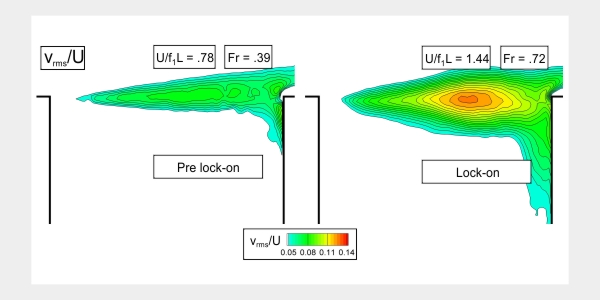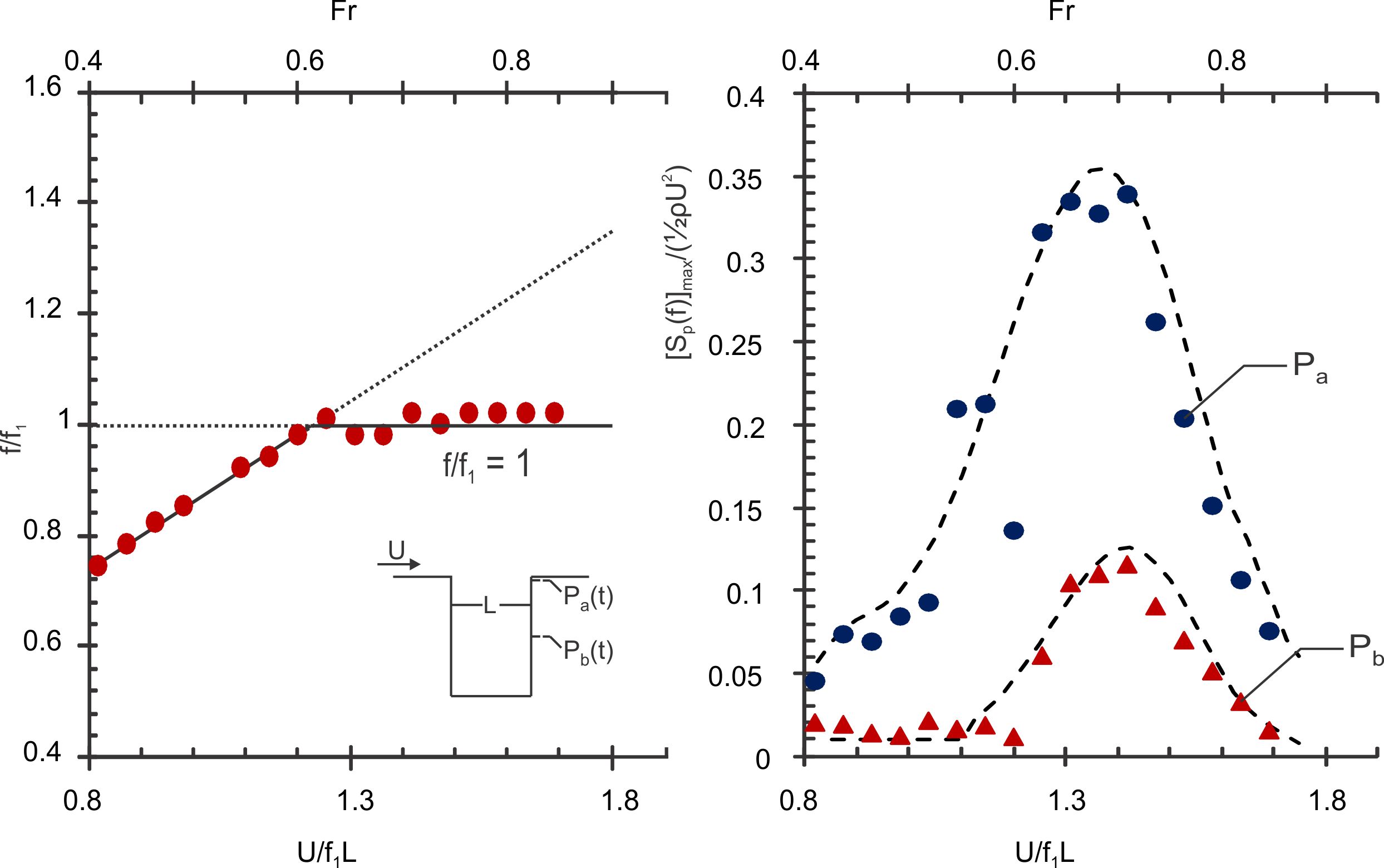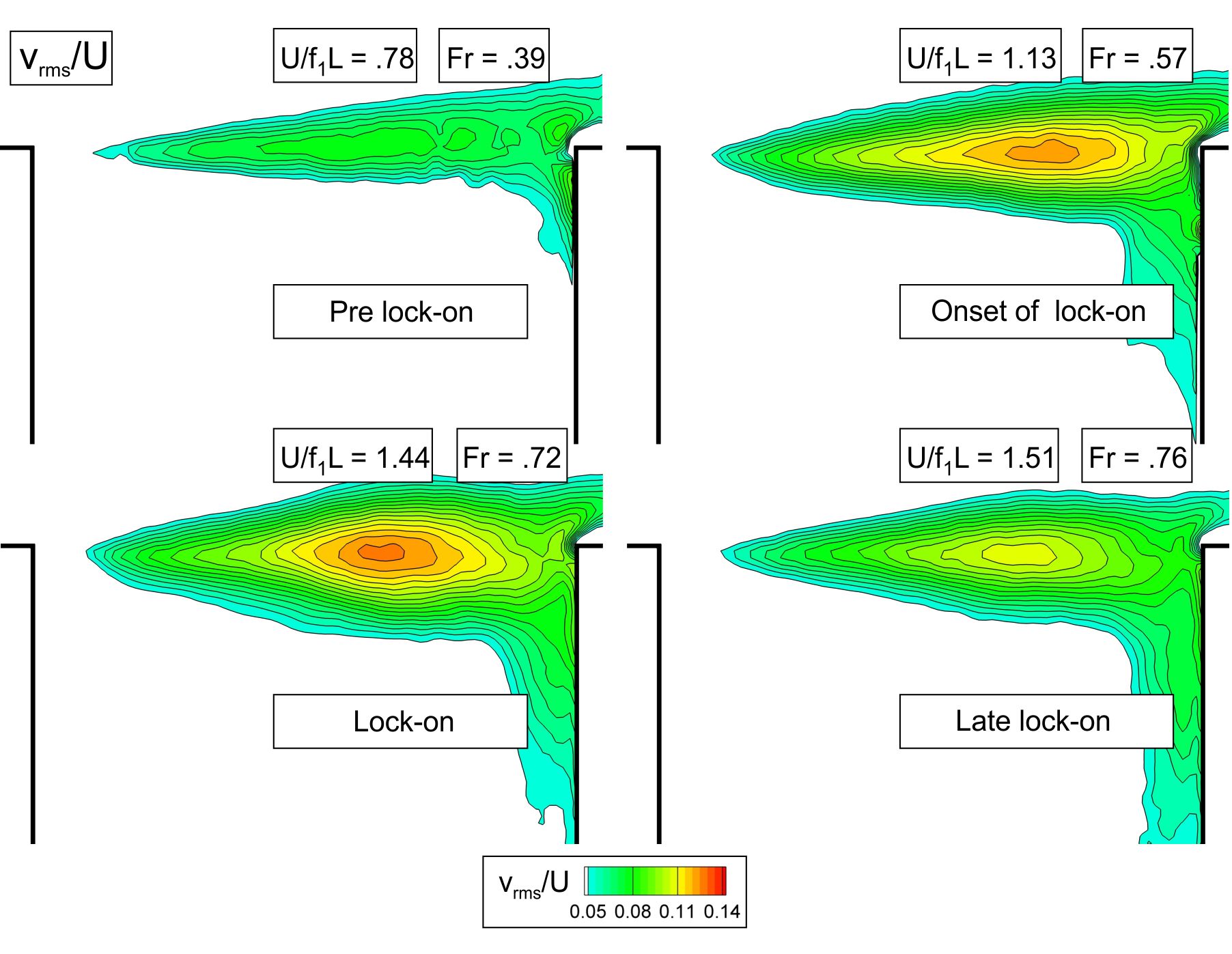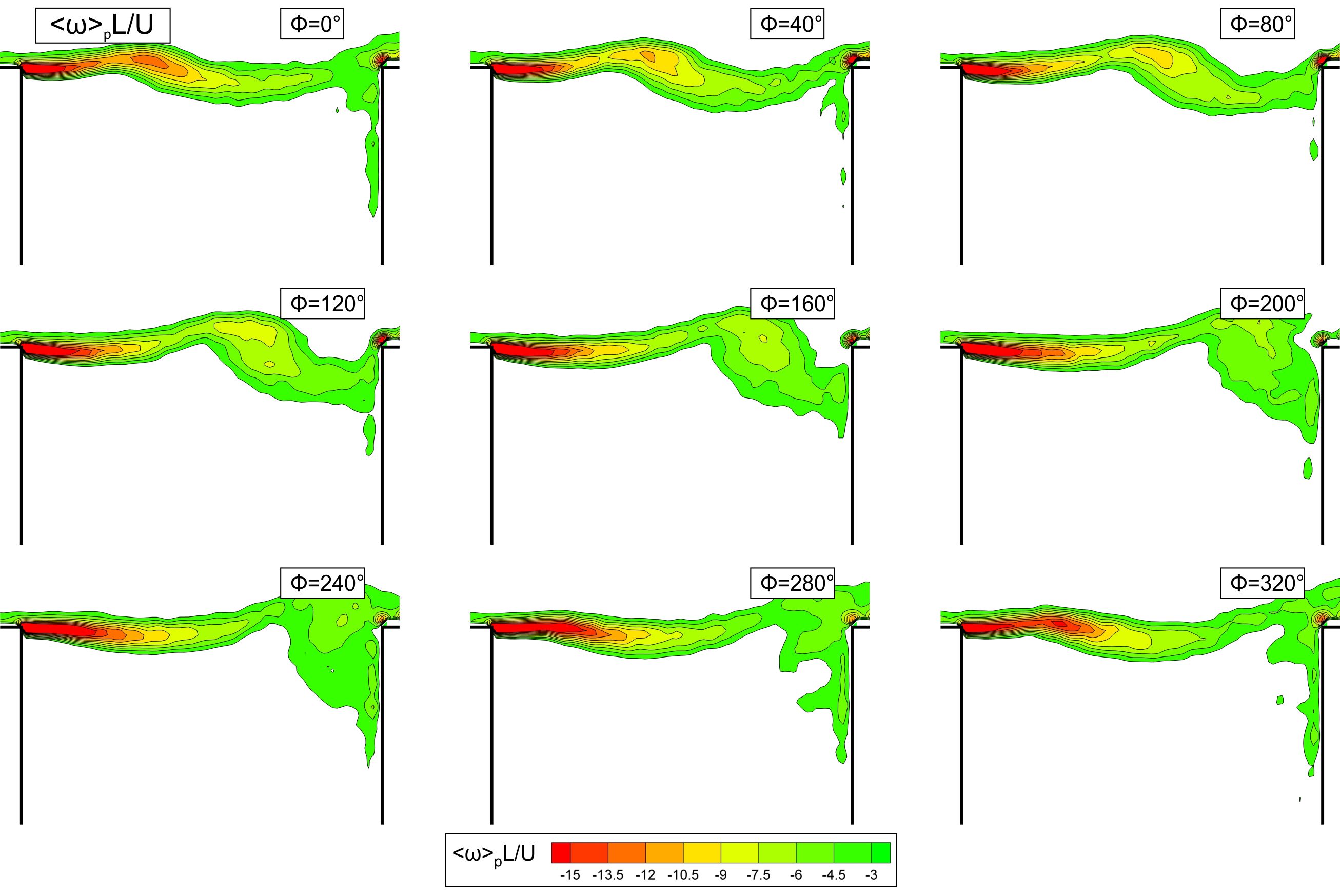Coupling with a Standing Gravity Wave
Submitted by rdn217 on Wed, 2013-10-30 13:11
Coupling with a Standing Gravity Wave
Shallow, fully turbulent inflow past a cavity can give rise to highly organized oscillations, due to coupling between: (i) the inherent instability of the separated turbulent layer along the opening of the cavity, and (ii) a gravity standing wave within the cavity. Techniques of particle image velocimetry and pressure measurements are employed to characterize the occurrence of the fully coupled state of the oscillation, relative to its uncoupled state. At a threshold value of inflow velocity, the frequency of the inherent instability of the turbulent separated shear layer locks-on to the frequency of the gravity standing wave. Moreover, the amplitude of the spectral peak of the pressure fluctuation, both at the impingement corner of the cavity and within the cavity, attains maximum values when lock-on occurs. Occurrence of a fully coupled or locked-on state substantially alters the time-averaged flow structure. Enhanced magnitudes of patterns of Reynolds stress and transverse velocity fluctuation occur along the cavity shear layer. Simultaneously, increased flow from within the cavity towards the separated shear layer occurs at a location immediately downstream of separation at the leading-edge of the cavity and, correspondingly, increased flow into the cavity occurs in the impingement region. The influence of the locked-on state is therefore global: both the separated shear layer along the mouth of the cavity and the flow within the cavity are substantially altered. Phase-averaged representations of the flow structure show highly coherent, phase-locked patterns of vorticity along the cavity opening during the locked-on state. These vorticity patterns are associated with large, phase-locked excursions of the transverse component of velocity, within both the separated the shear layer and the cavity.
Principal Investigators: M. Wolfinger and C. Ozen

Several methods are employed to characeterize the coupling of shear layer instabilities with a flow adjacent cavity. The spectra of unsteady pressure measurements are determined to characterize the magnitude of instabilites both in the shear layer and within the cavity. When flow instabilites in the shear layer approach a resonant mode of the cavity, the instabilites in the shear layer lock-on to the resonant mode. Characterization of the pressure spectra at different inflow velocities allows for the identification of several flow regimes: pre lock-on; onset of lock-on; lock-on; and late lock-on.
Particle image velocimetry fields are time averaged to determine: time averaged values of velocity and vorticity; turbulence statistics; and Reynolds stress. Spectra of the unsteady velocity are also determined across the shear layer.
Phase averaged realizations of the flow field are also employed to characterize the unsteady flow structure.
2012 American Institute of Physics



